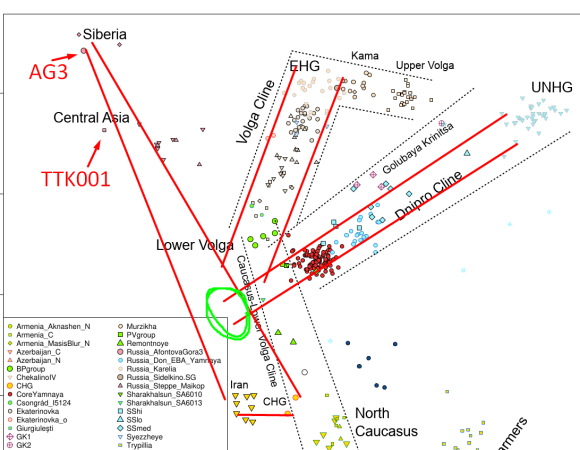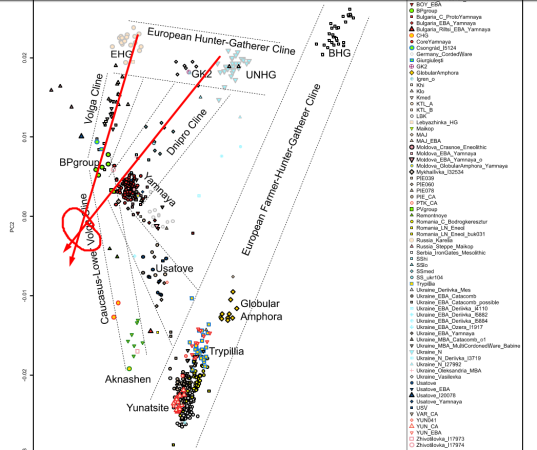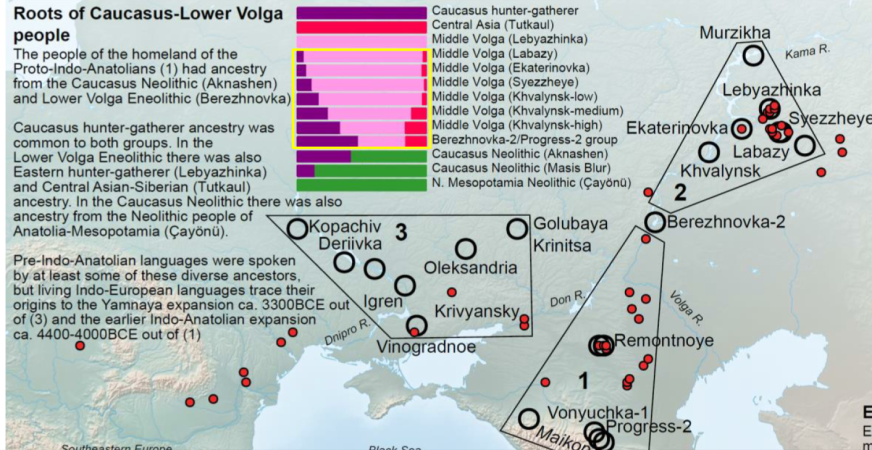After the new paper focusing on the steppe, it was time to add new findings and samples that prove my point in this thread.
One sample of interest is a new Eneolithic sample from the
Lower Don, a potential place where a migration from south of the Caucasus might have taken place roughly about 6000 BC. The sample is from
Krivyanskiy (individual ID I11828):
4359-4251 calBCE :
That's much younger than the supposed migration of these southern Caucasus people to the Lower Don but at least for now there isn't any better sample. The interesting thing about this sample is that in distal modeling it is about
60% CHG without the second wave of Aknashen-related ancestry and more importantly it is the first sample with
J2a from the Eneolithic Steppe alongside one J1 from Khavlynsk.
Y-DNA and mtDNA:
It's the subclade of
J-M319:
https://www.yfull.com/tree/J-M319/
By looking at the information from Yfull, its modern distribution and the basal clades imply an origin in Westasia.
Its mt-haplogroup is
T2a1b:
https://www.yfull.com/mtree/T2a1b/
It shares the same clade as Vunyuchka, one of the already published Steppe_Eneolithic samples.
In the paper they don't differentiate between CHG or Iran_N and just use the term CHG, so I am still waiting for genotype and G25 data to test if this sample has just Kotias-type CHG or a CHG-type somewhat shifted towards the Iran_N cluster which could indicate an origin in
Armenia and/or Azerbaijan.





